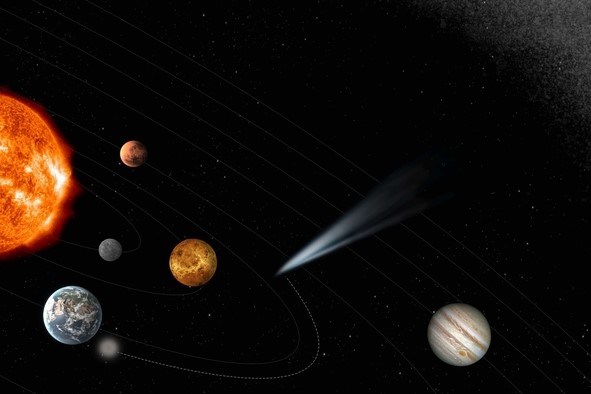The European Space Agency (ESA) has agreed to build the mission’s main probe, with the launch postponed until 2029, which will seek to intercept a primordial comet for the first time, unaffected by the sun’s radiation.
on the mission comet objection (Comet Interceptor, in free translation), which was initially scheduled to launch in 2028, Portuguese astrobiologist Zeta Martins, who Part of the international team which will analyze the collected data later.
Through this mission, promoted by the European Space Agency in cooperation with its Japanese counterpart JAXA, scientists aim to obtain answers about the origin of life on Earth from sinner which has never come close to the Sun and, therefore, has remained the same since its formation.
The European Space Agency said in a statement that the “study phase” of the mission “has been completed” and that the construction of the main probe “will begin soon”, following the selection of the consortium. The mission includes a main probe and two smaller probes to observe the comet from different angles. One of the smaller investigations is in charge of JAXA.
Waiting for the guilty
The comet objection It will place the main probe 1.5 million kilometers from Earth, far from the Sun. Combined with ground-based telescopes, one of which will be built in Chile, the instrument will allow detection of a comet coming from the Oort cloud, a region at the ends of our solar system, and eventually interstellar objects that first entered the solar system on their way to the sun.
Thus, the main probe will be a “holding point” for one of these comets, Zeta Martins, a professor at the Higher Technical Institute (in Lisbon) who specializes in studying the origin of life on Earth, as previously told Lusa.
After identifying the hitherto unknown comet, the probe will travel for months or years through space to be in the right place and time to intercept the comet when it crosses the plane of the ecliptic, the plane of Earth’s orbit relative to the sun.
Two probes smaller than the main one will be launched before approaching the comet. These are the two instruments that orbit the comet and gather as much information as possible, including its surface composition, shape and structure. All the obtained data will be transmitted to ground-based telescopes through the main probe with which they communicate.
For Zeta-Martins, the interception of a primitive comet is like entering the “time machine”, since it will make it possible to discover the “organic molecules” that were available at the beginning of the formation of the solar system, and, accordingly, provide more concrete evidence about the origin of life. in Earth.
“Catching” such comets has been difficult, since they can only be detected when they approach the Sun for the first time, leaving little time for planning and sending a space mission in their direction.
Comets, usually described as “dirty ice balls”, contain in their composition, in addition to ice, dust, rock fragments, gas and organic compounds (the latter would have reached Earth as a result of the impact of comets on the Earth’s surface).
Previous space missions studied comets that entered our solar system several times and passed close to the sun, which made changes in its surface, which masked its original appearance. The European probe rosette It ran for two years, between 2014 and 2016, Comet 67P / Churyumov-Gerasimenkothat moves between the orbits of Earth and Jupiter. It was the first time A probe orbiting a comet It has a motorized unit on its surface.
the mission comet objection It will be attached to another ride, for Arielalso from the European Space Agency, which will study the chemical composition of the atmosphere of exoplanets (exoplanets) already discovered and in which Portuguese scientists also participate.

“Coffee trailblazer. Social media ninja. Unapologetic web guru. Friendly music fan. Alcohol fanatic.”

